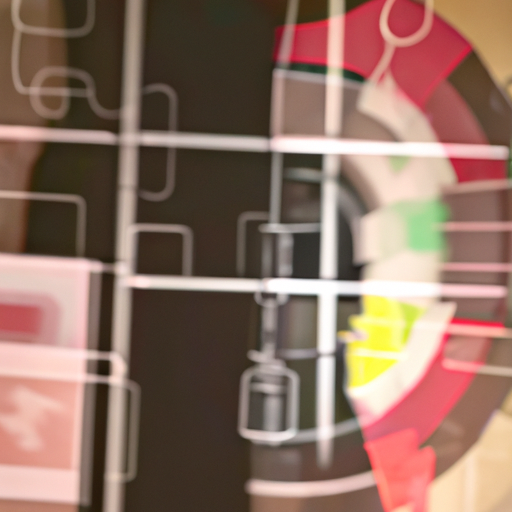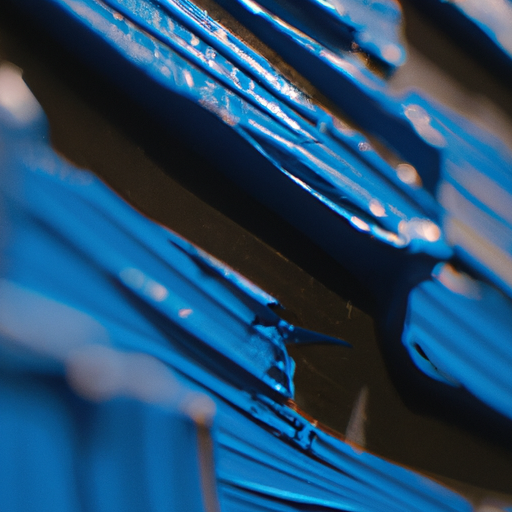
-
Table of Contents
- Custom Textures in Graphic Design: Adding Depth and Texture
- The Power of Texture in Graphic Design
- The Benefits of Custom Textures
- Creating Custom Textures
- Case Studies: Effective Use of Custom Textures
- Case Study 1: Branding for a Craft Brewery
- Case Study 2: Website Design for a Fashion Brand
- Conclusion
Custom Textures in Graphic Design: Adding Depth and Texture

Graphic design is a powerful tool that allows us to communicate visually and evoke emotions through various elements such as color, typography, and composition. One often overlooked element that can greatly enhance the impact of a design is texture. Texture adds depth, visual interest, and a tactile quality to a design, making it more engaging and memorable. While there are many pre-made textures available, custom textures offer designers the opportunity to create unique and tailored visuals that perfectly complement their design concept. In this article, we will explore the importance of custom textures in graphic design and how they can be effectively used to elevate a design.
The Power of Texture in Graphic Design
Texture is a fundamental element of design that can significantly influence how a design is perceived. It adds a sense of realism, depth, and dimension to an otherwise flat and two-dimensional composition. By incorporating texture into a design, designers can create a more immersive and visually appealing experience for the viewer.
Texture can be used to evoke specific emotions or convey a particular message. For example, a rough and gritty texture can be used to create a sense of ruggedness or authenticity, while a soft and smooth texture can evoke a feeling of elegance or luxury. By carefully selecting and applying textures, designers can enhance the overall mood and tone of a design.
The Benefits of Custom Textures
While there are countless pre-made textures available online, using custom textures offers several distinct advantages for graphic designers:
- Uniqueness: Custom textures allow designers to create visuals that are unique to their design concept. This helps to differentiate their work from others and make it more memorable.
- Alignment with Branding: Custom textures can be tailored to align with a brand’s visual identity, ensuring consistency across all design materials.
- Flexibility: Custom textures can be created to fit specific design requirements, such as size, color, and style. This level of control allows designers to achieve the desired visual effect more accurately.
- Enhanced Creativity: Creating custom textures encourages designers to think outside the box and experiment with different techniques and materials. This can lead to innovative and visually stunning results.
Creating Custom Textures
Creating custom textures requires a combination of creativity, technical skills, and attention to detail. Here are some steps to consider when creating custom textures:
- Define the Purpose: Before creating a custom texture, it is essential to understand the purpose and context in which it will be used. Consider the overall design concept, target audience, and desired emotional response.
- Choose the Right Materials: The choice of materials will greatly influence the texture’s appearance and feel. Experiment with different materials such as fabric, paper, wood, or even food items to achieve the desired effect.
- Experiment with Techniques: There are various techniques that can be used to create textures, such as rubbing, stamping, or digital manipulation. Explore different techniques to find the one that best suits your design concept.
- Document and Digitize: Once the texture is created, it is important to document it properly. Take high-resolution photographs or scan the texture to ensure its quality and usability in digital design projects.
- Refine and Edit: After digitizing the texture, it may be necessary to refine and edit it using graphic design software. Adjust the colors, contrast, and size to achieve the desired visual effect.
Case Studies: Effective Use of Custom Textures
Let’s explore some real-world examples of how custom textures have been effectively used in graphic design:
Case Study 1: Branding for a Craft Brewery
A craft brewery wanted to create a brand identity that reflected their commitment to quality and craftsmanship. The design agency created a custom texture by scanning different types of wood used in the brewing process. This texture was then applied to various brand materials, including packaging, labels, and promotional materials. The custom wood texture added a rustic and authentic feel to the design, effectively communicating the brand’s values and creating a memorable visual identity.
Case Study 2: Website Design for a Fashion Brand
A fashion brand wanted to revamp their website to align with their new collection’s theme, which was inspired by nature. The design team created a custom texture by photographing various flowers and leaves and digitally manipulating them to create an abstract pattern. This custom texture was used as a background element throughout the website, adding a sense of organic beauty and enhancing the overall visual experience for the visitors.
Conclusion
Custom textures are a valuable tool in graphic design that can greatly enhance the impact and visual appeal of a design. By incorporating custom textures, designers can create unique and tailored visuals that evoke specific emotions and convey a brand’s message effectively. The process of creating custom textures allows designers to unleash their creativity and experiment with different materials and techniques, resulting in visually stunning and memorable designs. So, the next time you embark on a design project, consider the power of custom textures and the added depth and texture they can bring to your work.
